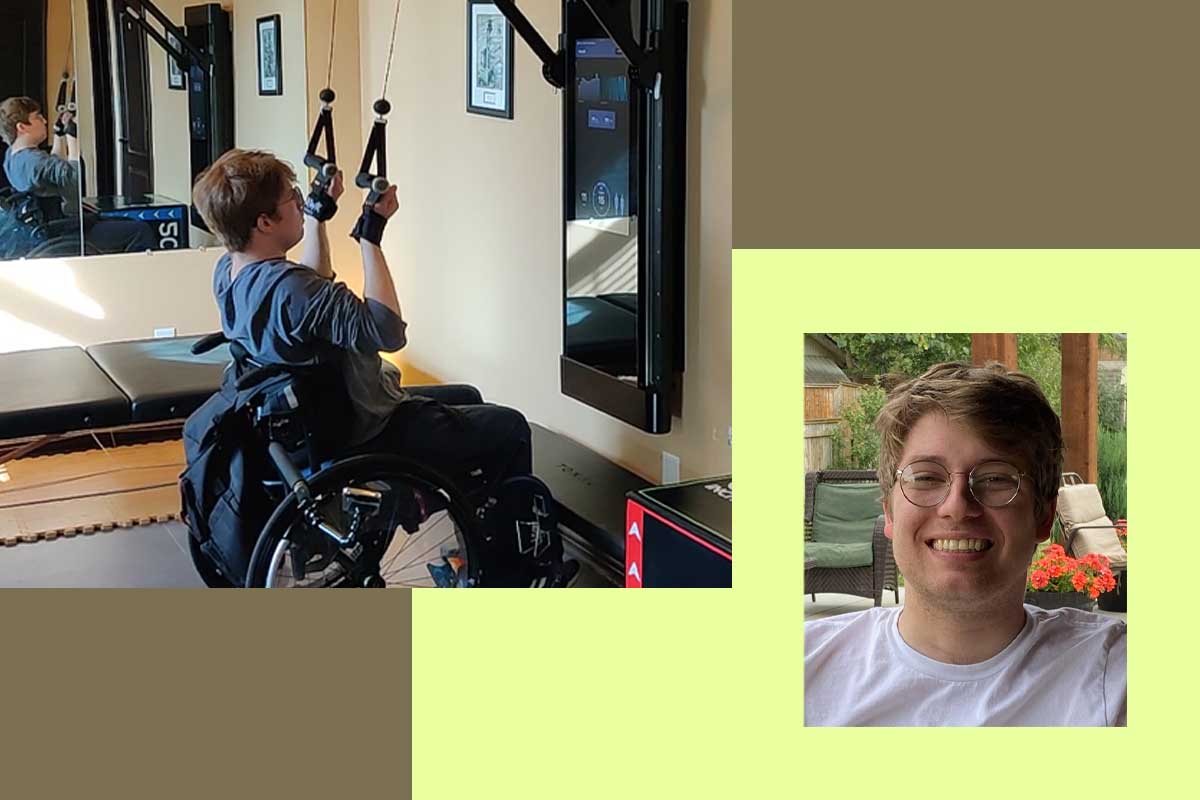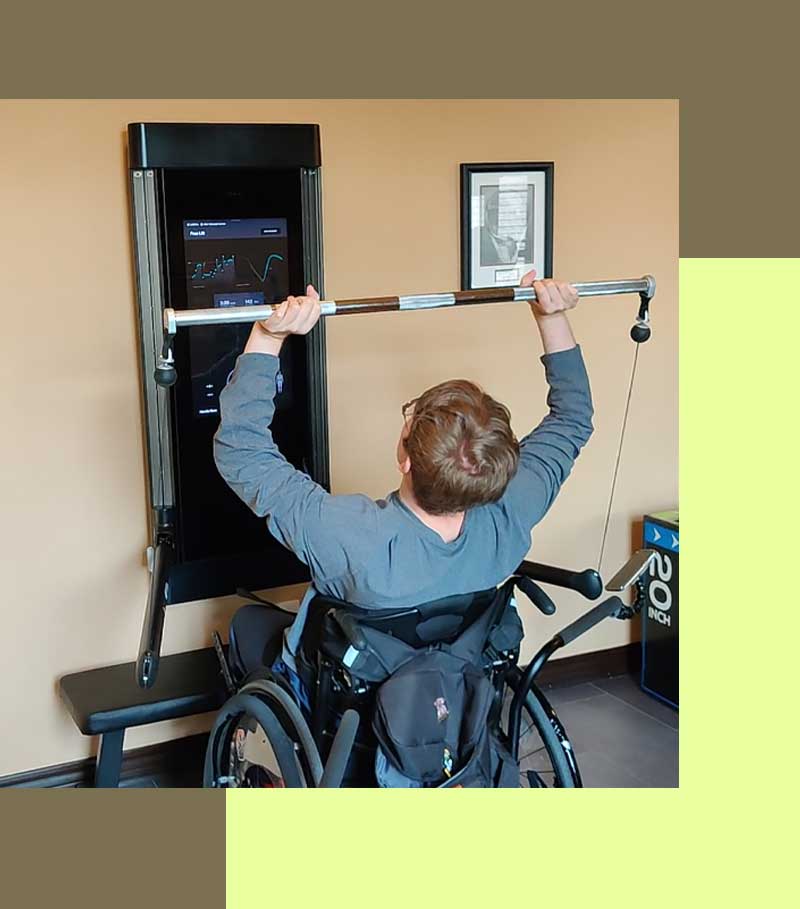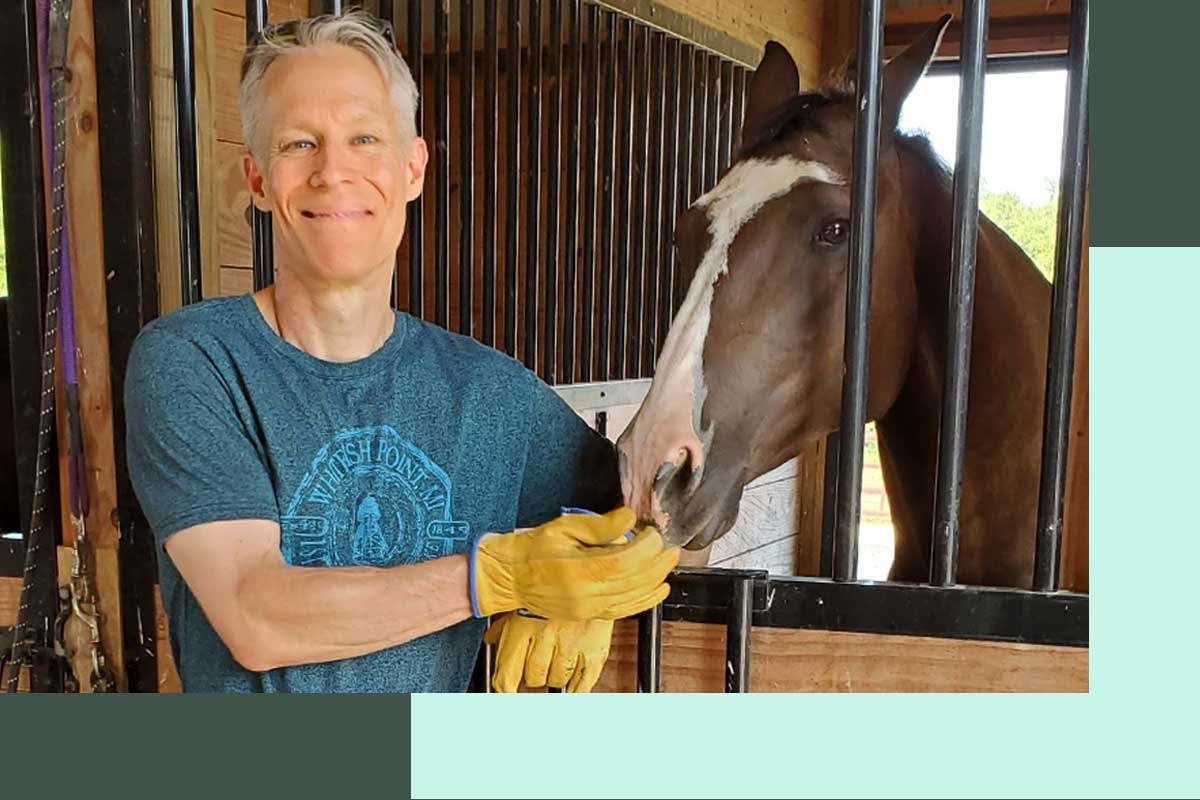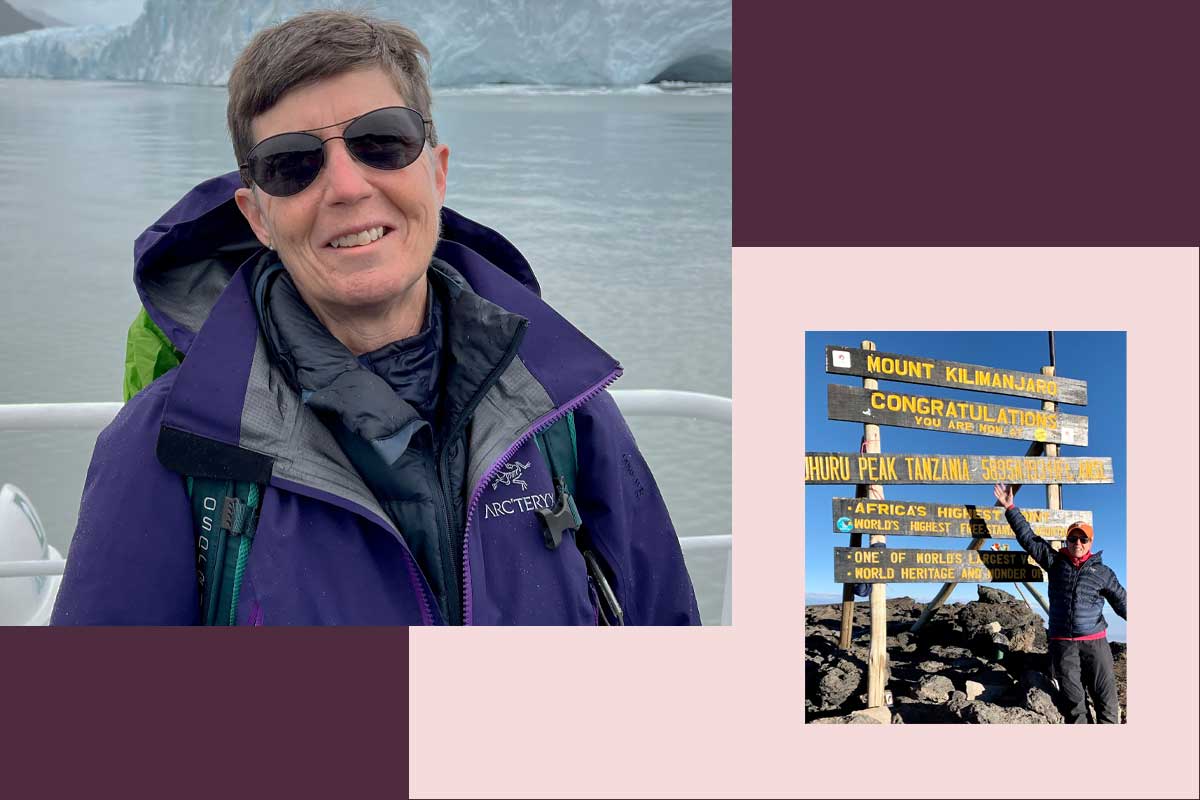Hudson Haws wants to help others with spinal cord injuries improve their quality of life.

By Hudson Haws as told to Karen Iorio Adelson
During my senior year of high school, my life unexpectedly changed in a moment. In October 2015, I was playing football when I went in for a tackle. My spine absorbed the hit, and I was instantly paralyzed from the chest down.
I spent two weeks in the ICU and then three months doing in-patient rehabilitation at Craig Hospital, a Denver-based world-renowned center for spinal cord injuries and traumatic brain injuries.
Even with extensive rehab, I still struggled in my day-to-day life, because my muscles were so weak. I lost my independence and had to learn to rely on my family for simple, everyday tasks. It’s been a challenge to find the support I need to regain my strength. After years of trying different therapies, I’ve finally found success with Tonal—and I want to help others do the same.
My Post-Injury Strength Journey
When I returned home to Bethany, Oklahoma from Craig Hospital, I had insurance-sponsored physical and occupational therapy, but the insurance company stopped paying for my sessions when I wasn’t showing progress at the level they required. I found a private clinic in Dallas where I started strength training, but it was a long drive from home. There wasn’t a specialized clinic like that for me in Oklahoma.
That’s when I met Jeremy Johnson, an adjunct professor of exercise science at Southern Nazarene University, where I went to college. Jeremy introduced me to new ways of training that weren’t part of my old rehab programs—including working out on Tonal. He was even able to create custom workouts that fit my specific needs. I saw a lot of progress from working out on Tonal along with doing functional electrical stimulation (in which an electrical charge is used to contract the muscles).
When I was first injured, I couldn’t even move my arms. I got that movement back later in the ICU; however, my muscles were still extremely weak after the accident. Now, when I flex my triceps, you can actually see them move. I’ve noticed a huge improvement in my core strength and coordination from moves like the rotational chop on Tonal. Having a strong core helps me so much in day-to-day life. I’m still a work in progress, but I’m proud of how far I’ve come.

Getting stronger is about way more than the amount of weight I can lift. It’s also had a major impact on how I move and what I can do in my daily life. For everything I do every day, I have to think to myself first: What is this going to take for me to do? Am I going to cause anyone an inconvenience because they have to help me with it? Tonal has helped alleviate a lot of that concern for me. My transfers—getting in and out of bed from my wheelchair or getting into my shower chair—have gotten a lot easier since I started training regularly.
Becoming more independent has improved my confidence because I don’t have to rely on others as much. Recently my dad, who is my main caretaker, went on an elk hunting trip for 10 days. I noticed that I could do so much more on my own than I could the last time he was away. My mom was here, and we have a nurse who comes in, but they didn’t have to physically help me at all. It was a big milestone for me.
Why Tonal Works for Me
Several of Tonal’s unique features have been essential in my training, but Eccentric Mode has been especially helpful. At first, I couldn’t do a concentric exercise, but I was able to get stronger by resisting movement with eccentric weight. Jeremy explained that for someone like me who’s looking to get more functional movement out of a muscle and build those neural connections as much as possible, eccentric lifting is going to build my strength faster.
Before Tonal, we’d try eccentric exercises manually with Jeremy adding and removing weight as I lifted. But being able to alter the resistance with the click of a button on Tonal has been a game changer. Now I can get that eccentric benefit on my own without any kind of sketchy rigging or assistance from a training partner.

Turning the weight on and off with a button also makes it possible for me to get into more positions for different exercises. Jeremy doesn’t even have to be there, and I can still get in a good workout. I can tap workouts on the screen and create new ones on my own in the app.
I’m home alone a lot because I work from home as a web developer, and now I can pour myself water from a gallon jug on the table which I couldn’t do before. When I’m with someone who I haven’t seen in a few months, they always say that I’m moving better, and I know it’s because my muscles are stronger.
Helping Others Find Their Strength
In the next few months after I started training with Jeremy, he began seeing more patients, and we realized we could help more people with spinal cord injuries. That’s when we founded our non-profit, The 34 Project, named after my old football number. We were able to rent a building from the Bethany Children’s Health Center, a local children’s hospital here in Bethany, Oklahoma, to open our center. Now we’re up and running, helping 15 people with neurological injuries and disabilities build strength on Tonal and our other equipment.
One of Jeremy’s patients at the center has been injured for 26 years. Now, he’s able to use his core and back muscles for the first time. He’s even going skiing this year because he wants to test out the abdominal strength he’s been building on Tonal.
We’re not miracle workers, but we want to help others gain independence and improve their quality of life just like I have. As I’ve learned, if you can build physical strength, you’re going to have a better quality of life.
The information provided in this article is for educational and informational purposes only. Individuals with pre-existing health conditions, injuries, or concerns should consult with their healthcare provider before trying a new exercise or nutrition regimen.


